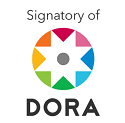Methodology for the evaluation of the territorial potentialities in the constitution of geoparks
Abstract
In the geotourism sector it is vital to designate geoparks where conditions are conducive to the development of geotourism, which depends largely on the potential of the territory. This research presents a procedure for the evaluation of the potentialities of a territory in the context of geoparks and the guidelines for its application. In the proposal, through a methodological approach structured in several stages, the context of the territory is analyzed, geosites of interest are identified, the existing conditions for its declaration as a geopark are evaluated, and finally, actions aimed at correcting or improving the identified inadequacies are presented. By means of the specialists' criteria, it was possible to verify the flexibility, transcendence, rationality, reliability, integrating character, transparency, parsimony, perspective, coherence and relevance of the proposed procedure.
Downloads
References
Castro Cuadras, D. L., Herrera Prado, A. L., Larrañaga Núñez, A. M., y Lizárraga Patrón, A. (2024). Turismo creativo y desarrollo sustentable: análisis de literatura. El Periplo Sustentable, 47, 7-22. https://doi.org/10.36677/elperiplo.v0i47.21927
Cifuentes-Correa, L., Quiroz-Fabra, J., Valencia-Arias, A., Londoño-Celis, W., y Hincapie, M. (2023). Methodological proposal to determine the potential of a territory to become a UNESCO Geopark: case study of Nevado del Ruiz Volcano initiative, Colombia. Episodes: Journal of International Geoscience, 46(4), 551-562. https://doi.org/10.18814/epiiugs/2023/023004
Estay Daskam, C. A. (2023). Propuestas para la gestión y aprovechamiento geoturístico del patrimonio geológico de la comuna San José del Maipo, Región Metropolitana, Chile. [Título profesional, Universidad de Chile]. Repositorio Académico de la Universidad de Chile. https://n9.cl/p58pc0
Gupta, V., Anand, S., Wei, D., Wang, G., Tripathi, S. C. (2024). Exploring applied sustainable strategies through geoheritage and geotourism. A systematic literature review. International Journal of Geoheritage and Parks, 12, 660-677. https://doi.org/10.1016/j.ijgeop.2024.11.009
Hadian, M. S. D., Barkah, M. N., Khadidjah, U. L. S., Yuliawati, A. K, Aryanti, A. N., Suhardiman, S. (2024). Urban geotourism development in the perspective of stakeholders, International Journal of Geoheritage and Parks. https://doi.org/10.1016/j.ijgeop.2024.12.001
Kubaliková, L. (2013). Geomorphosite assessment for geotourism purposes. Czech Journal of Tourism, 80(1), 1-4. https://doi.org/10.2478/cjot-2013-0005
Matshusa, K., Thomas, P., y Leonard, L. (2021). A methodology for examining geotourism potential at the Kruger National Park, South Africa. GeoJournal of Tourism and Geosites, 34(1), 209-217. https://doi.org/10.30892/gtg.34128-639
Miśkiewicz, K., Waśkowska, A., y Welc, E. M. (2024). Documentation and Assessment of Geosites for Geotourism and Geoparks. (1ª ed.). AGH University of Krakow.
Mori Human, M., Ramírez Pérez, O., y García Rivas, E. (2022). Turismo sostenible teniendo como base la evaluación de geositios. Universidad y sociedad, 14(3), 202-216. https://n9.cl/m4xw3
Novarlia, I. (2023). A study of environmentally-sound geotourism potential in Sumedang Regency. Interdisciplinary Social Studies, 2(5), 1945-1952. https://doi.org/10.55324/iss.v2i5.410
Paz Salas, N., Morante Carballo, F., Domínguez Cuesta, M. J., Carrión Mero, P., y Berrezueta, E. (2022). Evaluación del sistema playa-acantilado de Canoa (Ecuador) como sitio de interés geoturístico. Geogaceta, 72, 47-50. https://n9.cl/u26h4
Pelaez Mendoza, O., (2024, 3 de febrero). Geología en Cuba, bajo el prisma de las investigaciones. Granma. https://n9.cl/oim0w2
Quesada Valverde, M. E., y Quesada Román, A. (2023). Worldwide trends in methods and resources promoting geoconservation, geotourism, and geoheritage. Geosciences, 13(39), 1-12. https://doi.org/10.3390/geosciences13020039
Ramírez Pérez, J. F., Pérez Hernández, I., Rodríguez Martínez, M., y Miranda Camejo, H. (2020). Turismo local sostenible: contribución al desarrollo territorial en Cuba. Cooperativismo y Desarrollo, 8(3), 425-447. https://n9.cl/w401n
Tamang, L. D., Mandal, U. K., Karmakar, M., Banerjee, M., y Ghosh, D. (2022). Geomorphosite evaluation for geotourism development using geosite assessment model (GAM): A study from a Proterozoic terrain in eastern India. International Journal of Geoheritage and Parks, 11, 82-99. https://doi.org/10.1016/j.ijgeop.2022.12.001
Tomic, N., y Božić, S. (2014). A modified Geosite Assessment Model (M-GAM) and its application on the Lazar Canyon area (Serbia). International Journal of Environmental Research, 8(4), 1041-1052. https://doi.org/10.22059/ijer.2014.798
UNESCO (2015). Directrices operativas para los Geoparques Mundiales de la UNESCO. Ginebra: UNESCO. https://n9.cl/39n11
Vujičić, M. D., Vasiljević, D. A., Marković, S. B., Hose, T. A., Lukić, T., Hadžić, O., y Janićević, S. (2011). Preliminary geosite assessment model (gam) and its application on Fruška gora mountain, potential geotourism destination of Serbia. Acta Geographica Slovenica, 51(2), 361-376. https://doi.org/10.3986/AGS51303
Copyright (c) 2024 Naya Licet Rodríguez-Travieso, Aramis Alfonso-Llanes, Maykel García-Sierra

This work is licensed under a Creative Commons Attribution-NonCommercial-ShareAlike 4.0 International License.
LICENCIA DE CONTENIDO
Creative Commons
Atribución-NoComercial-CompartirIgual 4.0 Internacional (CC BY-NC-SA 4.0)
Política propuesta para revistas que ofrecen acceso abierto
Aquellos autores/as que tengan publicaciones con esta revista, aceptan los términos siguientes:
Usted es libre de:
Compartir — copiar y redistribuir el material en cualquier medio o formato
Adaptar — remezclar, transformar y construir a partir del material
La licenciante no puede revocar estas libertades en tanto usted siga los términos de la licencia
Bajo los siguientes términos:
Atribución — Usted debe dar crédito de manera adecuada, brindar un enlace a la licencia, e indicar si se han realizado cambios. Puede hacerlo en cualquier forma razonable, pero no de forma tal que sugiera que usted o su uso tienen el apoyo de la licenciante.
NoComercial — Usted no puede hacer uso del material con propósitos comerciales.
CompartirIgual — Si remezcla, transforma o crea a partir del material, debe distribuir su contribución bajo la lamisma licencia del original.
No hay restricciones adicionales — No puede aplicar términos legales ni medidas tecnológicas que restrinjan legalmente a otras a hacer cualquier uso permitido por la licencia.
DERECHOS DE AUTOR Y PERMISO
La revista permite que los autores tengan los derechos de autor sin restricciones.
La revista permite que los autores conserven los derechos de publicación sin restricciones; y garantizan a la revista el derecho de ser la primera publicación del trabajo.


















